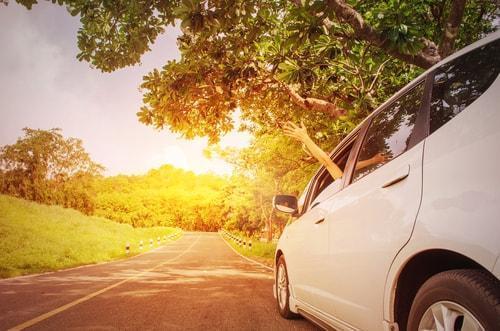Spring Season Brings New Dangers for Drivers
 Despite a few major snowstorms—including Winter Storm Stella which virtually shut down the Northeast for a day or so—the 2016-2017 winter was a relatively mild one. While the cold season seemed to retighten its grip a little this month, spring is officially upon us and warmer weather will soon be here. Spring is a season of new beginnings, as trees begin to show signs of green once again and animals reemerge from their winter hideouts. Amidst the optimism of the season, there are also new dangers, especially for drivers, motorcycle riders, bicyclists, and pedestrians who use Connecticut’s roadways.
Despite a few major snowstorms—including Winter Storm Stella which virtually shut down the Northeast for a day or so—the 2016-2017 winter was a relatively mild one. While the cold season seemed to retighten its grip a little this month, spring is officially upon us and warmer weather will soon be here. Spring is a season of new beginnings, as trees begin to show signs of green once again and animals reemerge from their winter hideouts. Amidst the optimism of the season, there are also new dangers, especially for drivers, motorcycle riders, bicyclists, and pedestrians who use Connecticut’s roadways.
Roadway Wear and Tear
When the snow flies, we look to road maintenance crews to keep streets and highways safe by using snowplows, salt and sand spreaders, and other tools. These implements—along with effects of ice forming in existing cracks in the asphalt or pavement—can leave gouges, potholes, and debris in travel lanes. A driver who is even mildly distracted could easily hit a pothole, causing him or her to lose control and collide with another vehicle. Leftover sand and gravel are especially dangerous for motorcyclists who may not always see the hazard until it is too late.
Rain, Visibility, and Flooding
Rain and wet pavement contribute to thousands of crashes each year. Water on the roadway makes both stopping and handling more difficult, while rain itself can be a factor in decreased visibility. Particularly heavy rainfall can make it nearly impossible for drivers to see the road. In addition, large puddles left in the wake of big storms be problematic for vehicles prone to hydroplaning. While you cannot simply stay home every time that it rains, you can take precautions such as using your headlights and fog lamps, giving yourself extra room to stop, and driving slower—with your hazards flashing—when visibility is compromised.
Animal Activity
During the spring, animals of all sizes become much more active than they were in the winter. Smaller animals such as squirrels, raccoons, groundhogs, and foxes can be distracting, causing drivers to take their attention away from the road. Larger animals like coyotes or deer—even the occasional moose or black bear—can be seen along Connecticut roadways and could cause serious damage if they are hit by a car. When driving through areas where animal activity is common, drive with caution and leave plenty of room between you and the car in front of you. The other car may stop suddenly to avoid hitting an animal, and it is up to you to avoid a potential rear-end collision.
Injured in a Springtime Accident?
If you have been injured due to another driver’s inability to manage the dangers of spring driving, you may be entitled to collect compensation for your injuries. Contact an experienced personal injury attorney in Connecticut to learn about your legal options. Call 860-290-8690 for a free consultation at Woolf & Ross Law Firm, LLC today.
Sources:
http://www.providencejournal.com/news/20170324/march-delivers-cold-dose-of-reality-in-ri-after-mild-winter
https://www.travelers.com/resources/auto/safe-driving/spring-driving-tips.aspx
https://www.esurance.com/info/car/dangers-of-spring-driving






